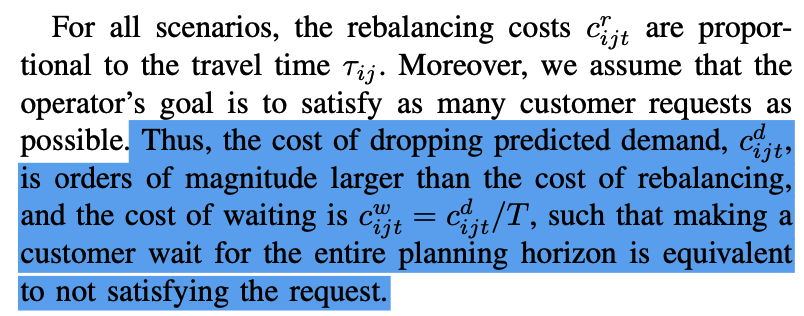-
Notifications
You must be signed in to change notification settings - Fork 2
New issue
Have a question about this project? Sign up for a free GitHub account to open an issue and contact its maintainers and the community.
By clicking “Sign up for GitHub”, you agree to our terms of service and privacy statement. We’ll occasionally send you account related emails.
Already on GitHub? Sign in to your account
Line 55, 556 in Road_network_sim.m #3
Comments
|
@huevosabio , do you have a moment to take a look at this? Sorry to bother you! If I understand correctly, the concern is that the units of |
Yes, this is my concern. |
|
Hey @TronYY , allow me a couple of days to look at this, it's been 5 years and a quick glance doesn't yield a quick answer :) |
Dear authors, Maybe I misunderstood the meaning of the variable
where Here maybe I confused |
|
I think this is highly plausible. Thank you for making your way through the code! Definitely a lesson on why one should document code - I promise we're better developers now! |
|
Dearf authors, Bother you again. Could you explain the Line 159 Why the dropping cost here is Since in MPC_MCF.m invoked by Road_network_sim_v2.m(with perfect/empty predictor), the dropping cost here is Thank you! Happy new year! |
|
Sorry I missed this! This is to acknowledge that I saw your message, let me look into it in the coming days. It's really a Ramon question, but I will try to better understand what is happening here. |
|
Wow, looking at this code was a trip down memory lane. I have no firm answers, but a few suspicions. We should have really had a single toggle to choose the sim name and load the right predictions accordingly, but alas. In line with this, my guess is that The Again, this is a guess based on maybe 30 minutes of perusing code I wrote 6 years ago, so it may be incorrect. Sorry you have to wade through this code! |

Dear authors,
Thanks for your last reply, I can study the prediction module.
Here, I have questions about Line 552, 556 in Road_network_sim.m.
Line 552:
Passengers.FlowsIn(1:predleftin,:) = Passengers.FlowsIn(1:predleftin,:); + double(FlowsIn{currentTime}(1:predleftin,:));Line 556:
Passengers.FlowsOut(1:predleftout,:) = Passengers.FlowsOut(1:predleftout,:) + double(FlowsOut{currentTime}(1:predleftout,:));The number of rows in
Passengers.FlowsInandPassengers.FlowsOutis bothhorizon, i.e., 50 (For convenience, I only use FlowsIn to illustrate), which means 50 timesteps in 5 min.Passengers.FlowsInwith shape (50*66) means how many cars will arrive at each station in the future 5min.The number of rows in
FlowsIn{currentTime}is the number of car arriving time buckets, where these cars start in the future 2h (25 timesteps, 2h/5min) formcurrentTime.FlowsInis loaded from GoodPrediction.ipynb.FlowsIn{currentTime}with shape (#time_bucket_arrival * 66) means from now (currentTime), in the future some time buckets, how many cars will arrive at 66 stations.So the meaning of row in
Passengers.FlowsInandFlowsIn{currentTime}is different. Why the two variables can be directly added in Line 552?Thank you.
The text was updated successfully, but these errors were encountered: